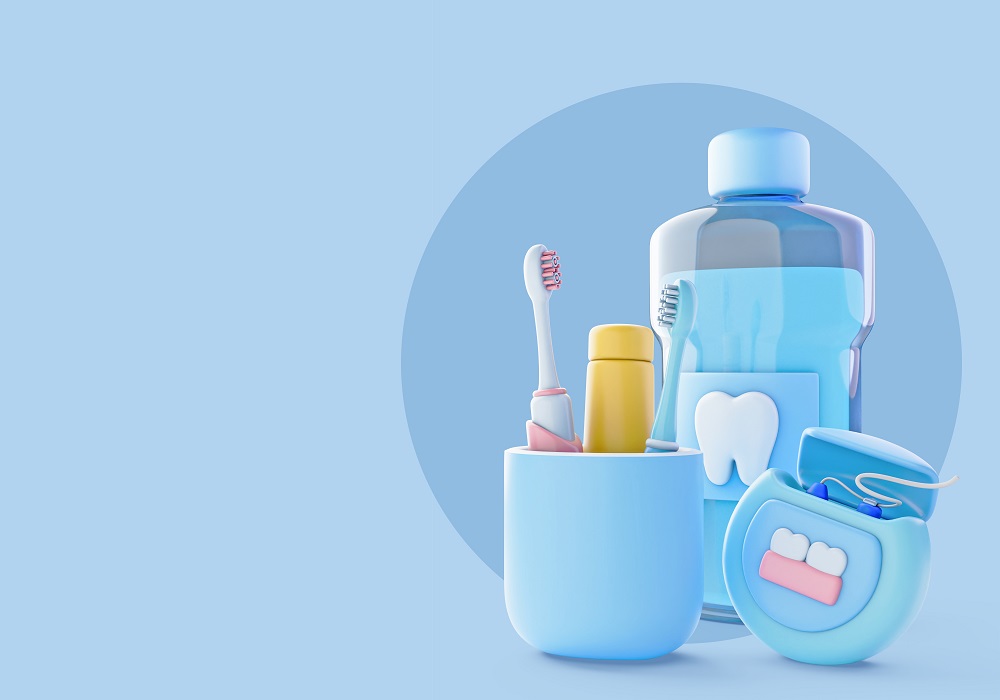What is professional teeth whitening
Professional teeth whitening is a cosmetic dental procedure that uses specialized treatments to lighten the shade of teeth, removing stains and discoloration. This procedure is typically performed by a dentist or a dental hygienist in a dental office, and it can provide faster and more dramatic results than over-the-counter teeth whitening products.
The most common type of professional teeth whitening involves the use of a bleaching agent, such as hydrogen peroxide or carbamide peroxide, which is applied directly to the teeth. The agent works by breaking down the molecular bonds that cause stains on the teeth, allowing the whitening agent to penetrate and lighten the teeth.
Professional teeth whitening is generally considered safe and effective, but it is important to have the procedure performed by a licensed dental professional who can assess your oral health and recommend the best course of treatment for your individual needs.
What are the risks of teeth whitening?
Professional teeth whitening is generally considered safe when performed by a licensed dental professional. However, like any dental procedure, there are some potential risks and side effects that you should be aware of, including:
- Sensitivity: Some people may experience increased tooth sensitivity after teeth whitening, which can range from mild to severe. This usually resolves within a few days, but in some cases, it may persist longer.
- Gum irritation: Whitening agents can sometimes irritate the gums and cause discomfort or inflammation. This usually resolves within a few days, but in some cases, it may require treatment.
- Uneven results: Teeth whitening may not produce perfectly even results, especially if you have existing dental restorations such as fillings or crowns that do not respond to the whitening agent.
- Over Bleaching: In some cases, teeth may be overbleached, resulting in a translucent, greyish appearance. This is more likely to occur with excessive use of whitening products or with prolonged exposure to high concentrations of the whitening agent.
- Damage to tooth enamel: Excessive use of teeth whitening products can damage tooth enamel and lead to increased sensitivity or other dental problems.
It is important to discuss any potential risks or concerns with your dentist before undergoing teeth whitening to ensure that the procedure is safe and appropriate for your individual needs.
What are the benefits of teeth whitening?
There are several benefits to teeth whitening, including:
- Improved appearance: Teeth whitening can enhance the appearance of your teeth, giving you a brighter, more youthful-looking smile. This can help to boost your confidence and self-esteem.
- Enhanced social and professional interactions: A brighter smile can also make you appear more approachable and friendly, which can improve your social and professional interactions.
- Safe and effective: Professional teeth whitening is a safe and effective procedure when performed by a licensed dental professional. It can provide faster and more dramatic results than over-the-counter teeth whitening products.
- Convenience: Professional teeth whitening can be done quickly and easily in a dental office, and in some cases, may be completed in a single visit.
- Long-lasting results: With proper care and maintenance, teeth whitening can provide long-lasting results, helping you to maintain a bright, white smile for years to come.
- Increased self-confidence: A brighter smile can also help to increase self-confidence and self-esteem, allowing you to feel more comfortable in social and professional situations.
- Improved oral hygiene: Teeth whitening can also help to improve oral hygiene habits, as people who have invested in the appearance of their teeth are often more motivated to take good care of them.
- Cost-effective: Teeth whitening is a relatively affordable cosmetic dental treatment, especially when compared to other options such as veneers or crowns.
- Quick and easy: Professional teeth whitening treatments are quick and easy, often taking less than an hour to complete. Many people can achieve the results they want with just one or two treatments.
Overall, teeth whitening can be a safe, convenient, and effective way to improve the appearance of your teeth and enhance your overall oral health and well-being.
What is the procedure of teeth whitening?
The procedure for teeth whitening can vary depending on the type of treatment you choose, but here is a general overview of what to expect during a professional teeth whitening appointment:
- Evaluation: Your dentist or dental hygienist will first evaluate your teeth and gums to ensure that they are healthy enough for whitening treatment. They may also take photographs or impressions of your teeth to help track your progress.
- Cleaning: Before beginning the whitening process, your teeth will be cleaned to remove any debris or buildup that could interfere with the whitening agent.
- Application of Whitening Agent: The whitening agent will then be applied to your teeth using a tray or applicator, which allows the agent to penetrate the teeth and break down the molecular bonds that cause stains and discoloration.
- Activation: Depending on the type of whitening agent used, a special light or laser may be used to activate the agent and enhance the whitening process.
- Multiple applications: The whitening agent may need to be applied several times over the course of the appointment, with each application typically lasting between 15 and 30 minutes.
- Final Rinse: After the final application, your dentist or dental hygienist will rinse your mouth and remove the whitening agent.
- Evaluation of results: Your dentist or dental hygienist will evaluate the results of the treatment and may provide recommendations for follow-up treatment or maintenance to help maintain your newly whitened smile.
The entire procedure typically takes between one and two hours, depending on the extent of the whitening and the number of applications required. Some patients may experience mild sensitivity or irritation after the procedure, but this is usually temporary and can be managed with over-the-counter pain relievers or sensitive toothpaste.
Professional teeth whitening at home
Professional teeth whitening at home typically involves the use of customized whitening trays that are designed to fit your teeth perfectly. Here are the general steps involved in professional teeth whitening at home:
- Consultation: You will first need to schedule a consultation with your dentist to discuss your options for professional teeth whitening at home. During this consultation, your dentist will take impressions of your teeth to create custom trays that fit your teeth precisely.
- Tray Fitting: Once your custom trays are ready, your dentist will provide you with the trays and the whitening agent. They will show you how to properly apply the whitening agent to the trays and how to insert them into your mouth. They may also provide you with instructions for how long to wear the trays each day.
- Treatment: You will typically be instructed to wear the whitening trays for several hours each day, often for a period of two weeks or more. The length of treatment may vary depending on the severity of the staining and discoloration.
- Follow-up: Once you have completed the treatment, your dentist may schedule a follow-up appointment to evaluate the results and make recommendations for ongoing maintenance.
Professional teeth whitening at home can be a convenient and effective way to whiten your teeth, but it is important to follow your dentist's instructions carefully to ensure that you achieve the best results. Overuse or misuse of the whitening agent can cause sensitivity, irritation, or other dental problems, so it is important to follow the recommended treatment plan and seek professional advice if you experience any issues during treatment.
FAQ
Whitening your teeth should not be painful, but some people may experience temporary sensitivity or discomfort during or after the procedure. This is typically caused by the whitening agent penetrating the tooth enamel and irritating the nerves in the teeth.
However, most professional teeth whitening treatments use a specialized gel that contains a desensitizing agent to help minimize discomfort. Your dentist may also recommend using a toothpaste designed for sensitive teeth in the days leading up to and following the whitening procedure.
If you do experience discomfort or sensitivity, it is important to notify your dentist or dental hygienist so that they can adjust the treatment as necessary. In most cases, any sensitivity or discomfort should subside within a few days of completing the whitening treatment.
Tooth whitening is not considered a permanent solution for discoloration, as teeth can become stained or discolored again over time due to various factors such as diet, aging, and lifestyle habits. However, with proper maintenance, the results of a professional teeth whitening treatment can last for several months or even up to a few years before additional touch-up treatments are needed.
The length of time that the whitening results last can depend on several factors, such as the type of treatment used, the individual's oral hygiene habits, and lifestyle choices. Regular brushing and flossing, as well as avoiding foods and drinks that are known to cause staining, such as coffee, tea, and red wine, can help to prolong the results of a teeth whitening treatment.
Brush with baking soda: Baking soda is a mild abrasive that can help remove surface stains from teeth. Simply wet your toothbrush, dip it in baking soda, and brush your teeth for about two minutes. You can do this a few times per week in addition to your regular tooth brushing routine.
Use hydrogen peroxide: Hydrogen peroxide is a natural bleaching agent that can help whiten teeth. You can mix hydrogen peroxide with water to create a mouthwash, or use it to brush your teeth by mixing it with baking soda. Be sure to rinse your mouth thoroughly with water after using hydrogen peroxide.
Oil pulling: Oil pulling is an ancient practice that involves swishing oil (such as coconut oil) around in your mouth for several minutes. Some people believe that this can help remove toxins and bacteria from the mouth, which can contribute to tooth discoloration. However, there is limited scientific evidence to support the effectiveness of oil pulling for teeth whitening.



 Dental Checkup Services
Dental Checkup Services
 Our range of products
Our range of products
 Oral Care Blogs
Oral Care Blogs

Recent Comments